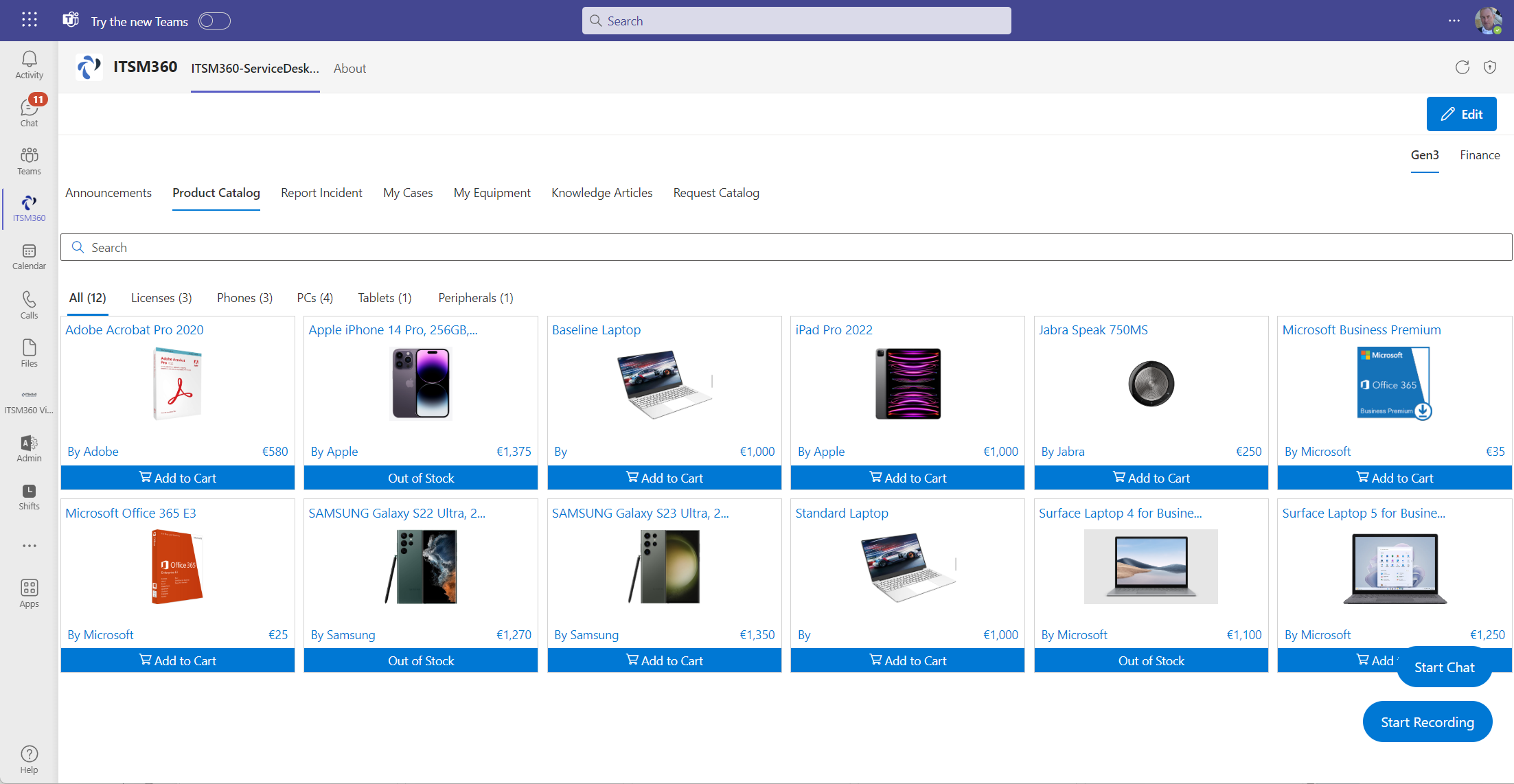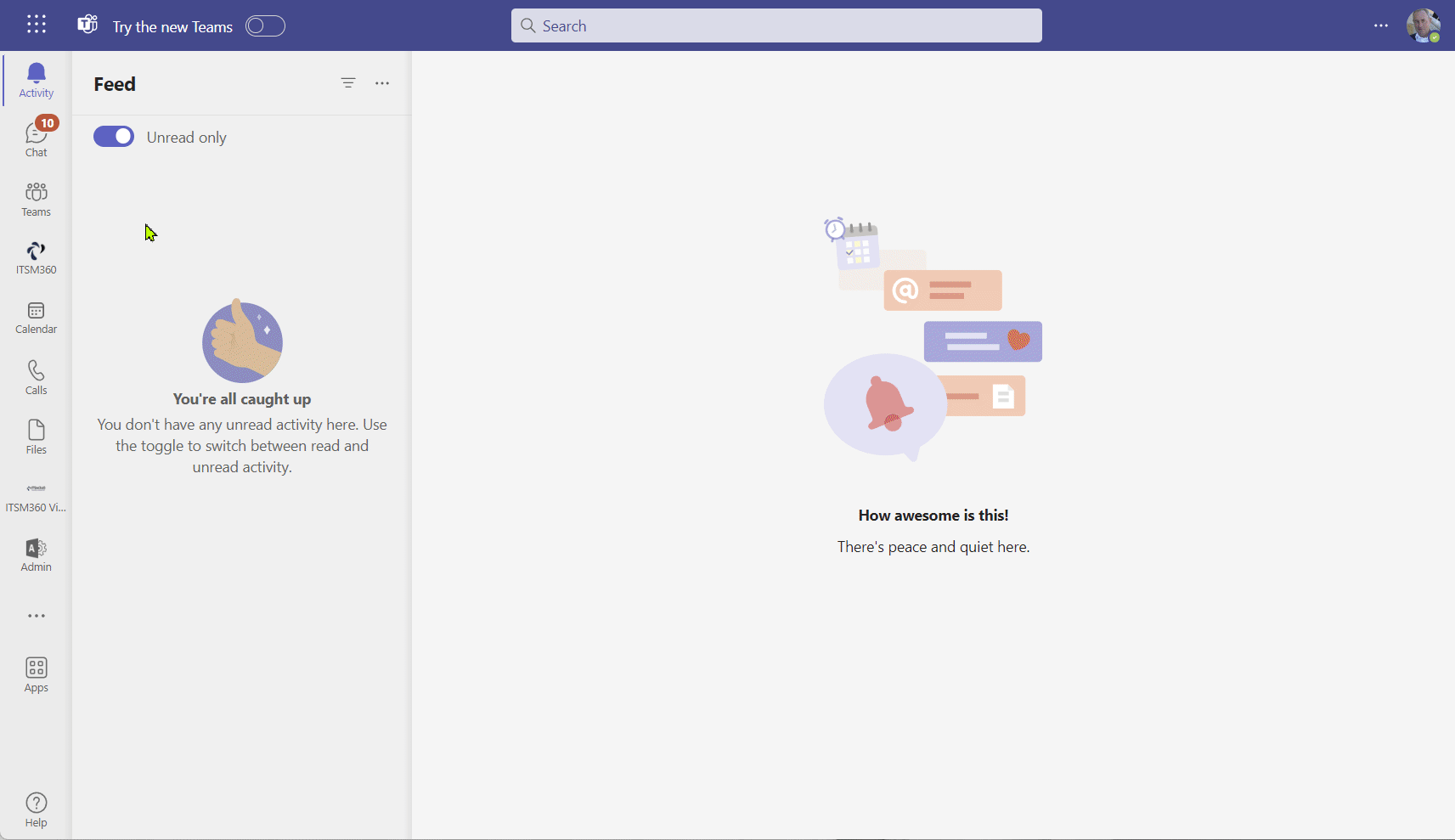IT self-service with ITSM360
Running IT self-service in Teams reduces calls and emails to the Service Desk – opens 24×7 where your users are working.
Explore our options for ready-made IT self-service or how-to custom-use the ITSM360 data source.

Discover the top four IT self-service options with us

Microsoft Teams
Running your IT self-service inside Teams holds excellent benefits for your end-user.
The ready-to-use IT self-service app for Microsoft enables you users to:
- Request services – browse the service catalog
- Report incidents – create tickets
- Request new software or devices from an inbuilt web-shop feature.
- List of the users’ assets/subscriptions/software and quick filing “asset malfunction” ticket
- Embedded knowledge
- See operational status from IT
- Create a case by dropping a voice to IT
- Request a live teams chat with IT
The app supports
- Multi-deployment feature with individual settings
- Governed by you AAD
- Supports custom heading and taxonomy
- Supports different languages and adapts to your locales
- Responsive

Dedicated SharePoint site for IT self-service
Experience all the functionalities and advantages of the Teams app directly on your SharePoint site.
Use-case for the app
Enhance your IT self-service with custom features (web parts or your business logic) and standard features like IT ticketing from ITSM360.

Corporate SharePoint intranet as host
Access the IT self-service app conveniently through your well-established corporate intranet. Ideal for organizations with high user adoption rates of their intranet.
Features:
- Multiple deployments supported for localization and languages

Build your IT self-service with the Power Platform
Explore the possibilities of Azure Cognitive Services, Power Virtual Agents, and CoPilot. Seamlessly integrate these cutting-edge technologies with Power Automate or Power Logic Apps in Azure to boost your productivity and efficiency.
The options require 1:1 customization compared to the standard offerings, but it gives you great flexibility if you have exceptional use cases.
